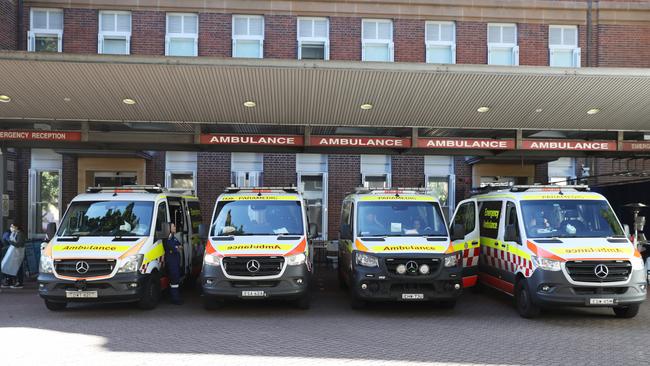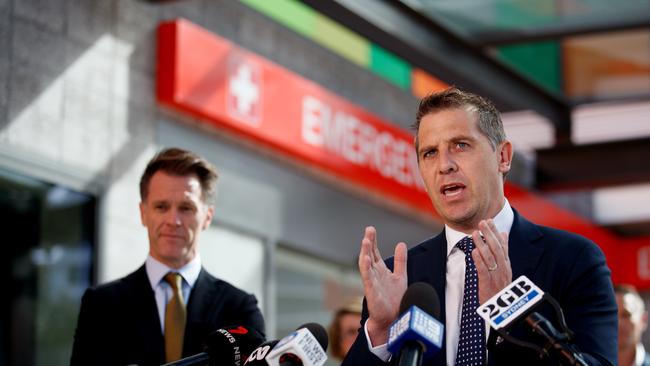A broken acrylic nail, heel blisters and ‘Google’ diagnoses: Budget plan to divert patients from ED
Heel blisters and broken acrylic nails are just some of the reasons people presenting at emergency departments which are being overwhelmed by record presentations.
NSW
Don't miss out on the headlines from NSW. Followed categories will be added to My News.
A Sydney emergency department nurse was forced to treat a teenager at 3am with a “broken acrylic nail” and offer bandaids to a man with heel blisters as frivolous cases turning up in hospitals across the state soar.
Panicked adults who have misdiagnosed their symptoms on Google, families who have run out of medication and parents bringing their children in with coughs and colds are among those adding to the burden.
In a bid to fix the problem, The Sunday Telegraph can reveal the Minns government is expanding its virtual care services as part of a $480 million health package to be unveiled in the NSW Budget to keep non-urgent cases out of hospital.
Building on the success of VirtualKIDS which became statewide at the end of 2023, a new statewide service called VirtualADULTS will be established to give people access to doctors, nurses and mental health clinicians, and specialist advice.
By calling Healthdirect, individuals will first speak to a registered nurse who will triage the patient, assessing the urgency of their condition and their suitability for a virtual consultation.
The government estimates the $171.4 million expansion of the “single front door” service will help divert about 180,000 people from ending up at an emergency department.

The Budget will also include $100 million to fund urgent care services for another two years.
The government estimates the bolstering of urgent care services – which are designed to capture people who are injured playing sport and also minor burns, rashes, sprains and suspected fractures – will help divert a further 114,000 people from hospital emergency departments.
The budget will also include $70 million for the expansion of emergency department short stay units to improve patient flow to reduce ED wait times by nearly 80,000 hours and $31.4 million will be set aside to enable an additional 3,500 patients to be treated as part of the Hospital in the Home scheme.
The relief package also funds the creation of a new “patient flow concierge” role to improve the discharge process.
The latest Bureau of Health Information data for January to March 2024 showed a record number of ambulance responses and more patients who are sicker than ever before presenting to NSW public hospital EDs.
Health Minister Ryan Park said the measures were expected to divert an estimated 290,000 visits to EDs each year.

“Our emergency departments face significant challenges with record presentations, so we are making the necessary investments across a range of strategically important areas to relieve that pressure and provide more alternatives for the community,” he said.
Speaking on the condition of anonymity, a Sutherland Hospital emergency department nurse – and member of the NSW Nurses Association – said the number of people heading to hospital for non-urgent complaints had soared since Covid.
“Runny noses, coughs, sore throats, panicked parents, a young man with blisters on his heels who insisted on waiting five hours for two bandaids, a woman who got an ambulance to try to get cough medicine and people who come here because their pharmacy is not open – there is no such thing as a lull anymore – it is constant,” she said.
“At 3 in the morning I had a 17-year-old who came in with a broken acrylic nail who had no pain relief at home. I gave her some Panadol and Nurofen and told her to go home in 10 minutes if the pain went – and she did.
“You also get people coming in convinced they’re having a stroke because they are a bit dizzy. A lot have Googled symptoms. Others are unhappy with their GP – last week someone turned up in the middle of the night after having back pain for three years and just wanting to know what was going on.”
The nurse said some people appeared to be aware that they shouldn’t be at hospital, apologising as they came in while explaining how “the pharmacy is shut”, while other people turned up to avoid paying for scans.
With nurses not allowed to turn anyone away, people just piled in, she said.
Got a news tip? Email weekendtele@news.com.au





